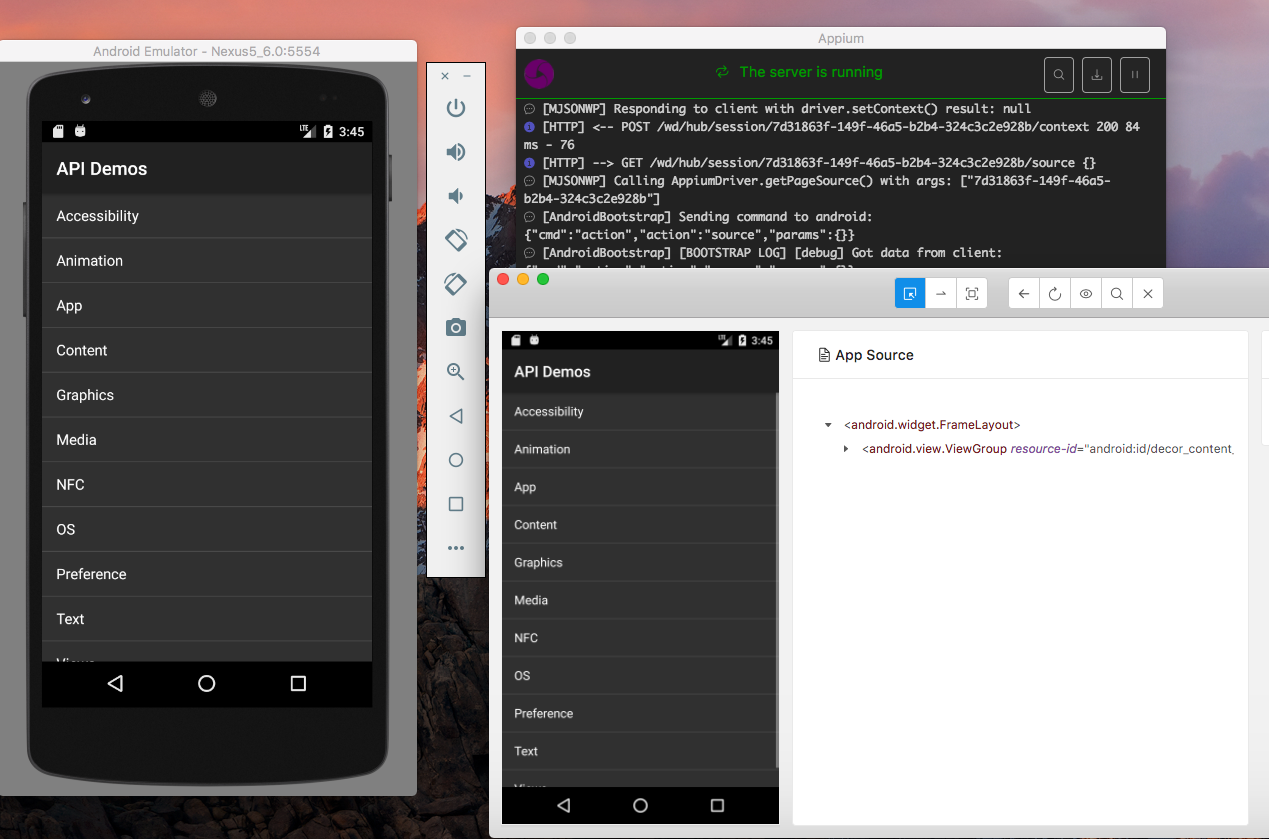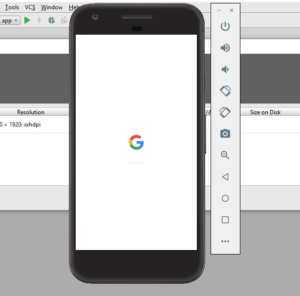
- #Android emulator mac appium how to#
- #Android emulator mac appium android#
- #Android emulator mac appium tv#
- #Android emulator mac appium download#
#Android emulator mac appium android#
The Android Emulator lets you develop and test Android apps without using a physical device. The Android SDK includes an Android device emulator - a virtual device that runs on your computer. To print a list of all emulator options, including a short description, enter this command emulator -help Let's view the avd that we have created, enter following command emulator -avd test (Navigate to tools folder where emulator )Įmulator -avd avd_name Here's the basic command-line syntax for starting a virtual device from a terminal prompt. list avd : Lists existing Android Virtual Devices. list : Lists existing targets or virtual devices. If you do not specify target, device, or avd, avdmanager lists all three.

avdmanager create avd -n test -k "system-images android-25 google_apis x86"īased on your requirements, you can change API level / ABI etc.īelow are few commands to view available targets, device definitions, or AVDs. The avdmanager tool is provided in the Android SDK Tools package (25.3.0 and higher) and is located in android_sdk/tools/bin/.Ĭreate AVD using below command, the following command creates an AVD named test using the x86 system image for API level 25.
#Android emulator mac appium tv#
An AVD lets you define the characteristics of an Android handset, Android Wear, or Android TV device that you want to simulate in the Android Emulator. In the same way we can initialize more than one AVD at the same time and a maximum of 16 AVDs.Ĭheck out official Android documentation on Create and Manage Virtual Devices Creating an emulator using Command Line :Īndroid avdmanager is a command line tool that allows to create and manage Android Virtual Devices (AVDs) from the command line. If we launch an other emulator, it will be assigned with an even numbered port after 5554 i.e second emulator will be assigned with port 5556. The default value is 5554 for the first android virtual device instance running on the your machine. Now Select the AVD name and click on Start/Play icon uder actions section. Now the devices will be displayed under the Android Virtual Devices with play and edit options. Step 5:- Give any name to the device and click on Finish.
#Android emulator mac appium download#
Make sure you are connected to the internet to download it. If you see Download link next to the system image, click on it to download the system image. x86 images run the fastest in the emulator. The right pane describes the selected system image. The other tabs include a more complete list. The Recommended tab lists recommended system images. Step 4: - Select the system image for a particular API level, and then click Next. Step 3: - Select any device, and then click Next. In Android Studio's 2.3.2+ AVD Manager displays with Play Store Column and Icons. System images with Google Play currently only work with AVDs targeting Nexus 5 and 5X. Other system images are labeled with Google Play, which means it includes the Google Play Store app and access to Google Play services. Notice that some system images are labeled with Google APIs, which means it includes access to Google Play services. Select Hardware page appears with list of devices. Step 2: - Click on Create Virtual Device, at the bottom of the AVD Manager dialog. Step 1: - Open the AVD Manager by clicking Tools > Android > AVD Manager. Creating an emulator using AVD Manager (Android Studio) The AVD Manager is an interface you can launch from Android Studio that helps you create and manage AVDs.


We can create emulators in two different ways:ġ.

So here Android Virtual Device (AVD) is a configuration that defines the characteristics of an Android phone, tablet, Android Wear, or Android TV device that you want to simulate in the Android Emulator. To run emulator, First we need to define an AVD which defines the hardware characteristics of the emulator like Device, Target API, CPU/ABI image and other options. In such cases we can use android emulators that emulates real device software, hardware and OS. However, we may not have enough real devices to test always with different versions of android.
#Android emulator mac appium how to#
We have seen earlier on how to execute tests on real Android Devices. Appium allows us to execute our tests on both real devices and emulators/simulators.


 0 kommentar(er)
0 kommentar(er)
